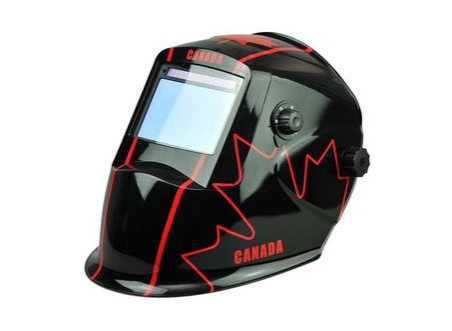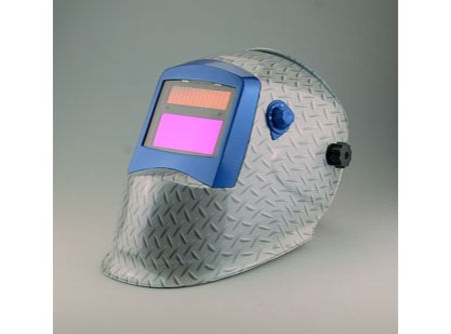Helmets are critical to operator safety and provide protection in welding and grinding applications. There are many options on the market with a wide range of features. However, not all welding helmets are created equal. When choosing a welding helmet, it is important to understand the current and future needs of the application and environment.
One of the essential features of any helmet is safety and compliance. In the United States, welding helmets are required to meet ANSI Z87.1 standards, while in Canada, helmets are required to meet CSA Z94.3 standards.
Welding helmets are designed to meet these standards; the industry is truly focused on protecting welders.
Common standards ensure that helmet lenses protect welders from anything that could affect their eyes.

Auto Darkening Welding Helmet
Types of lenses
One of the most important features of welding helmets is the type and quality of the lenses.
Both types of lenses are passive and usually made of polycarbonate plastic, while auto-darkening lenses are usually made of liquid crystal display (LCD) glass, auto-darkening lenses are the preferred type on the market today because they offer greater functionality and higher productivity than passive lenses.
The optical clarity of the surroundings is important to welders. It's not just about the arc and puddles, but seeing the area before and after the arc is struck, as well as the surrounding workpiece.
Welders often need a larger viewing area when looking for LCDs. But there's a trade-off - the larger the viewing area, the heavier and bulkier the helmet. It's a trade-off.
When investigating LCDs, welders should ask questions such as how well can I see through the LCD? How clearly can I see the part? How much can I see during, before, and after the weld? Before welders trigger the arc, they need to see exactly what they're doing to set it up properly.

Auto Darkening Welding Helmet
The number of shades indicates the intensity of light radiation allowed to reach the eye through the lens. Welding caps are available in shade numbers ranging from 4-13, with shades 4-8 being used primarily for sanding and cutting and 9-13 for welding.
However, knowing the environment in which most welding will be done is equally important and directly affects the auto-darkening capability. If welding will be done primarily outdoors or in sunny areas, it's important to find a helmet with technology that adapts to the optical field of view. For example, some welding helmets offer technology that eliminates interference from the automatic darkening filter (ADF) sensor, even when the sensor is obscured, when welding outdoors in direct sunlight, or when the weld is in an improper location. The helmet is designed to detect electromagnetic fields generated by the welding arc and dim only when necessary, eliminating the annoying flash of the ADF lens as it flickers from a clear state to a dark state.
Having a clear view will allow welders to accurately manipulate the weld, whether it's moving faster, changing the angle of work, or getting closer to the weld to improve overall quality.









